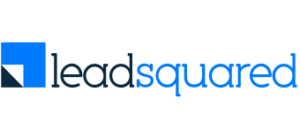In current times, healthcare workers collect a great deal of information. However, it is frequently fragmented across various departments and stored on different platforms and documents. The absence of integration leads to a void in knowledge transfer and disjointed patient profiles.
Analyzing healthcare indicators for each division of your institution and keeping an eye on attendance, its makeup, and the costs it incurs are essential. Contemporary healthcare analytics and expert dashboards enable you to:
- Outperform the competition
- Continuously enhance hospital performance
- Boost patient satisfaction levels and insight generation
Moreover, automatic healthcare reports will ensure you never miss a data update. Ultimately, all these measures empower your staff to deliver excellent patient care.
Furthermore, dashboards were a critical tool for healthcare professionals during the pandemic. The German hospital chain Asklepios’ CIO, Henning Schneider, oversaw the development of a dashboard for its 65 facilities.
The dashboard offered an overview of patients who required intensive care units (ICU), ventilators, and cardiac support, as well as the availability of beds and ventilators.
Dashboards are quickly becoming indispensable tools for healthcare workers. Before we explore the best dashboards for your needs, let’s analyze what a healthcare dashboard means and what it can help you achieve.
What is a Healthcare Dashboard?
A healthcare dashboard solves the issue of data overflow in hospitals and enables them to make the most of the data they have available. Healthcare dashboards come in a wide variety, but they are all analytical, thorough, and dynamic tools that offer a streamlined, transparent report of key performance indicators.
Metrics reported in this way simplify information processing. Ultimately, it provides a comprehensive overview of the patient and operational scenario. A deep dive into healthcare dashboards and their business outcomes shows us the following:
1. Simplify complex data
Dashboards make it easy to understand complex data points and give users insights into what needs immediate attention. It provides a quick snapshot of institutional and departmental performance.
From there, executives may use data to make swift performance reviews and accurate judgments. For instance, the dashboard for a respiratory unit might display poor performance. A dashboard can help management realise that it may be a staffing issue if the nurse-to-patient ratio is low. Dashboards in healthcare help identify such underlying causes and help users implement solutions accordingly.
3. Forecast trends to make intelligent decisions
Giving the management team a high-level, visual perspective of a facility’s metrics make it easier to identify trends. A dashboard displays trends of a KPI over time. When necessary, executives can promptly modify their strategies or goals with the help of these accurate projections. For instance, there is a greater likelihood of viral fevers and colds during the colder months. During such events, it is crucial to concentrate efforts and resources on the specialized departments that provide care for these ailments.
4. Delve into any department’s data
The ability to view an institution’s essential data is another advantage of dashboards in the healthcare industry. All data tends to exist in massive volumes. With healthcare dashboards, executives may delve into any KPI to better understand their organizational processes. For instance, a dashboard may highlight unusually high prices for a given department. When they analyze the numbers, they find that a supplier’s rates for bedding exceed the industry standard. Executives can subsequently prioritize identifying a new supplier with cost-effective bedding.
5. Provide enhanced care
Dashboards give users access to real-time data on the movements of their resources and patient check-ins. All staff members have easy access to this information and can use it to their advantage. For instance, every authorized staff member, from the doctor to the receptionist, should have access to patient data.
Long-term patient satisfaction and retention will increase when workers know the patient’s needs. One-third of doctors devote over 20 hours weekly to administrative and clerical work. Automated reporting tools in healthcare dashboards are an ideal solution to reduce time spent on manual tasks and shift their focus towards treating patients instead.
These are some of several business outcomes providers can experience with the help of a dashboard. This doesn’t mean that just any dashboard in the market will offer these features and benefits.
Providers, doctors, and IT staff use dashboards unique to their particular needs. Let’s get right into some of the most popular dashboards, their benefits, KPIs, and more!
Types of Healthcare Dashboards
Here’s a quick comparison table that helps you decide which healthcare dashboard you need to choose based on your hospital’s challenges.
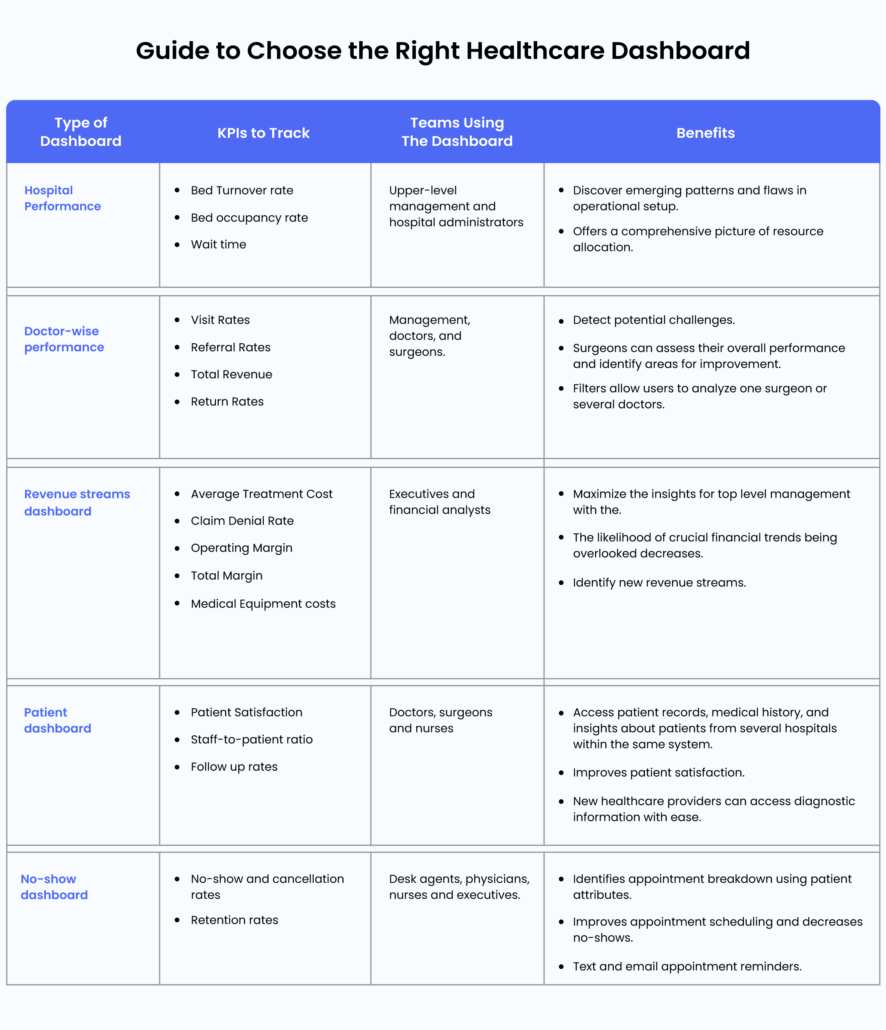
You can also download this guide to share it with your team or refer to it later: Guide to Choose the Right Healthcare Dashboard.
#1 Hospital Performance or Operational Dashboards
A hospital performance dashboard condenses enormous amounts of data, such as patient satisfaction, intake numbers, and staff performance. The hospital performance dashboard is ideal for executives responsible for formulating the hospital’s strategy.
It’s useful for those who need to know which initiatives will have the greatest positive impact. The visuals can also help users align strategic projects to KPIs and goals.
Users can discover emerging patterns and flaws in their operating setup. Additionally, hospital analytics provide a comprehensive picture of resource allocation as it tracks the demands and performance of every unit in a hospital.
The top KPIs to track for hospital performance are:
1. Bed Turnover
This hospital statistic demonstrates how rapidly outgoing patients are replaced by incoming ones.

2. Bed Occupancy Rate
Provides information on the number of vacant beds. A high number of vacant beds is a tell-tale sign of stagnation. Reducing these percentages is essential to the growth and expansion of an organization.

3. Patient Wait Time
Patient wait time is a vital influence on patient experiences and retention. These insights enable management to focus on areas with lengthy wait periods for improvements. As a result, managers can accordingly increase the number of employees, offer training to improve efficiency and implement technology for higher productivity.
A dashboard is critical to accurately calculate this KPI, as staff cannot track such information manually. Upper-level management needs such dashboards to track their facility’s growth and progress.
It empowers them to make informed choices for their long-term strategies. These dashboards will assist you in improving on a clinical, functional, and financial level.
#2 Doctor Performance Dashboard
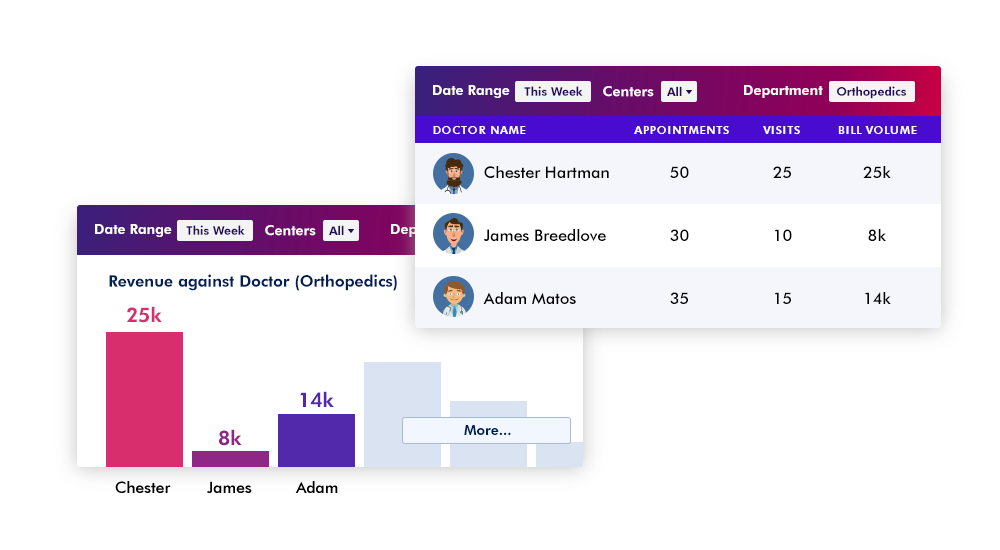
A doctor-wise performance dashboard analyses the quality of a doctor’s performance in real-time. Some of these are:
- Time of discharge
- Interaction with the primary care provider
- Revenue metrics
The Johns Hopkins School of Medicine is measuring the quality of its physicians using a data-driven provider dashboard. Previously, measuring performance was tricky since a physician may conduct the surgery but might not be the sole person caring for the patient.
That is no longer an issue with a dashboard that can track doctor-wise care provided for patients. Hospitals can also use this dashboard to align bonuses based on performance metrics.
A user can instantly detect potential challenges, such as a surgeon spending a significant amount of time in the operating room for very few surgeries. Department heads can gain insights into:
- The average age of patients
- Surgeries conducted
- And the number of planned procedures vs. Emergencies
These factors help determine if those characteristics explain the time spent. The best part is that they can do it without spending hours preparing several spreadsheets or charts as reports.
“We used to struggle to create the right reports, and it took up 50% of the team’s efforts. Generating the reports would take us a couple of days, but with LeadSquared’s dashboards, this process only takes a few clicks”
Kiran Ramakrishna, Assistant Manager, Manipal Hospitals
Additionally, surgeons could assess their overall performance and identify areas for improvement. Users may use filters in many ways to analyze one surgeon or several doctors. The top KPIs to track for doctor-wise performance are:
- Visitation Volume
This measures how many hours a day a doctor sees patients. The number of patients examined depends on the doctor’s specialty and the kind of cases handled. Management should ideally evaluate these figures over a few months rather than a shorter period.
- Total Revenue
The overall money generated by a doctor for their practice is an essential indicator. You must, however, use it in conjunction with other measures. Notably, if you have doctors who work part-time at the clinic.
- Referrals
Another critical component is identifying the source for patient referrals. It tells you whether your marketing is producing results or whether your doctors are keeping their patients’ content. Referrals are frequently the lifeblood of any healthcare institution, and they have the power to make or break your facility’s revenue.
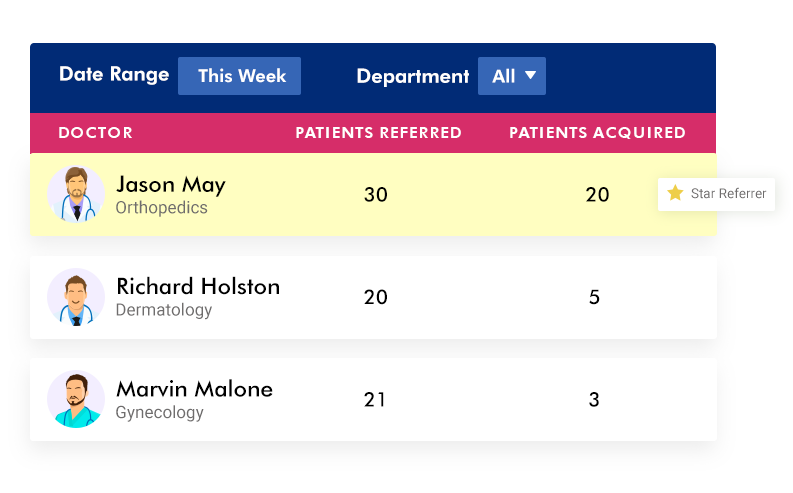
#3 Finacial or Revenue-based Dashboards
Executives and Financial analysts use revenue dashboards for medical providers as performance analysis tools to track revenue indicators. This sort of dashboard provides users with a transparent interface to evaluate:
- Revenue by patient category
- Revenue by the clinic
- Quarterly revenue trend and budget comparison.
Users can segment the visuals into more actionable information using the filters. The primary goal of a hospital is not to generate revenue. But they cannot stay afloat without ensuring they make meets end. Positive financial indicators are the benchmarks of a successful strategy.
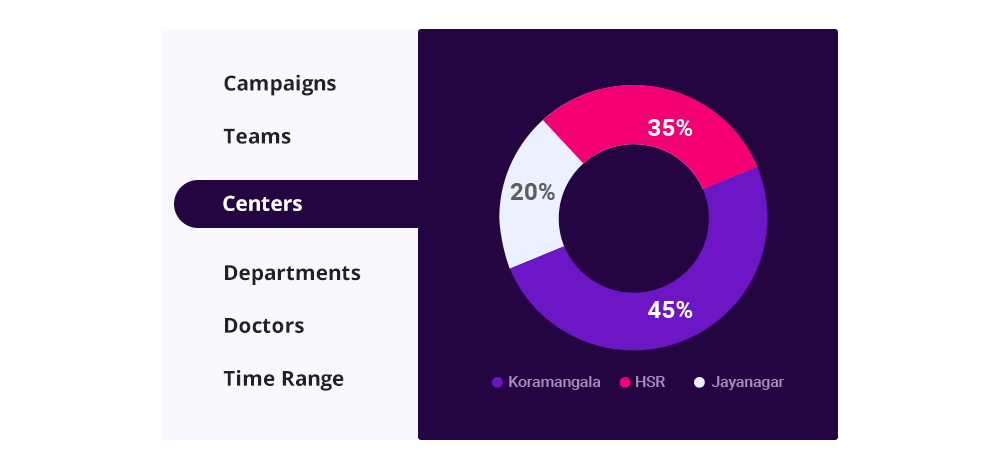
Additionally, clinics can use such a dashboard to identify new revenue streams. For example, hospitals can provide comprehensive digitized medical supplies to clients on a monthly subscription basis. Figuring out such information requires you to track and monitor several KPIs, some of which are:
1. The Average Treatment Cost
It underlines the average amount of money each patient spends in a hospital. Although it can be alluring to increase this expense to boost the hospital’s profit, keep in mind that a hospital’s primary goal isn’t to turn a profit. The objective of every hospital must always be to provide high-quality medical care. The pursuit of higher profit margins shouldn’t come at the expense of patient satisfaction.

2. Claim Denial Rate
This hospital metric offers a glimpse into the facility’s day-to-day operations. It is directly related to the KPIs for cost and processing time for insurance claims. A low incidence of claim denials demonstrates the hospital’s ability to prioritize its patients.

3. Operating Margin
This is when hospitals calculate their margin solely using revenues and costs associated with patient care. As a portion of operational revenue, it describes the gap between operating revenue and costs.

4. Total Margin
It demonstrates the healthcare provider’s profitability by showing how expenses and revenues balance out at the end of the day.

5. Medical Equipment
This healthcare measure indicates how often the equipment is in use. And, subsequently, how much it costs to maintain.
Healthcare technology constantly evolves, which inevitably causes equipment to become old or inadequate. Neglecting the KPI for medical equipment utilization will result in exorbitant maintenance costs and lost labor. You need to keep track of inventory and equipment, their cost, usage, and expense over time.
#4 Patient Dashboards
This dashboard is ideal for accessing patient records, medical history, and insights about patients from several hospitals within the same system. The patient dashboard significantly cuts down the time it takes to respond to a patient and improves overall client happiness.
Repeating the same information to various doctors is one of the most difficult tasks a patient must undertake. But healthcare facilities can extract data from an EHR record and integrate it with the dashboard on their CRM to access patient information within the hospital’s system. The dashboard helps you organize the data you frequently view in one area.
It’s important to keep in mind that patients who are discontent are less likely to return to your facility. Moreover, after a negative experience, they won’t refer your clinic to friends and family, or worse, can steer them away from it.
In the internet age, “negative buzz” may spread quickly and is difficult to stop. Utilizing a healthcare dashboard of this kind might be beneficial, primarily when communicating with patients.
The top KPIs to track using this dashboard are:
1. Patient Satisfaction
The healthcare KPI that will entice or, on the other hand, deter potential patients is the patient satisfaction rate. The higher the patient satisfaction rate, the better. This metric highlights feedback on how patients perceive your treatment and help identify areas of improvement. The patient satisfaction score necessitates surveys and feedback forms from which you can assess and analyze the average score.
2. Staff-to-patient ratio
This hospital measure displays the staffing levels in the clinical setting. Your staff management procedures’ effectiveness depends on the staff-to-patient ratio. It indicates whether the hospital has an excess or a shortage of staff.

3. Follow-up rate
This measure addresses patient care after they undergo treatment. Simple check-ups, physical examinations, new prescriptions, blood tests, and consultations are a few examples of proactive follow-ups.
Monitoring follow-up rates by departments and determining the type of care patients most urgently want will help you successfully assist patients through their treatment. This rate requires you to track and monitor your staff’s activities to get an accurate score.
#5 No-Show Dashboard
According to studies, no-show patients cost the healthcare industry $150 billion annually. When people miss appointments, it negatively affects other patients who might need treatment for critical illnesses and would otherwise be unable to wait.
Ultimately no-show patients negatively affect overall performance. You can decrease no-shows by implementing this dashboard for your business and using patient engagement strategies to confirm appointments via text message or by leaving a callback request.
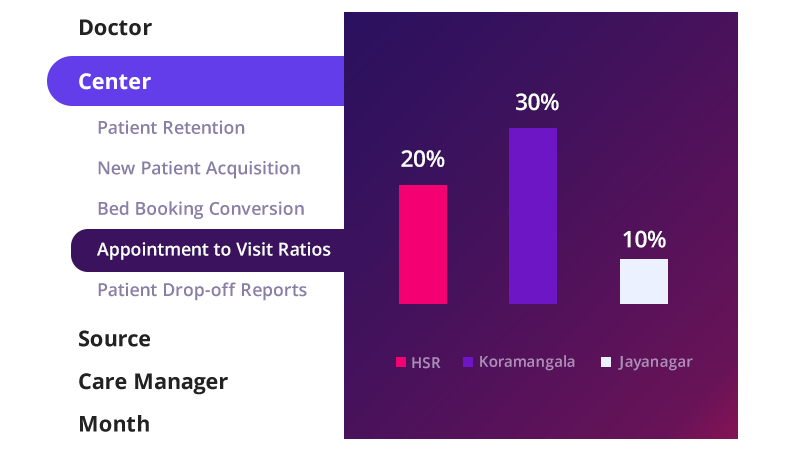
The No-Show dashboard’s high prediction rates enable you to prioritize people who need treatment the most and avoid any revenue loss. Dashboards improve appointment scheduling by:
- Identifying the breakdown of appointments using a combination of patient attributes.
- Predicting which patients are more likely to cancel so that you adjust your schedule, and
- Texting and emailing appointment reminders.
KPIs to track in this dashboard are:
1. No-show rate
No show rates depend on specific data like cancellation rates and late arrivals. However, since tracking the no-show rate is the most revealing measure for patient visits, you can calculate the other rates afterward.

2. Retention Rate
Patient retention strategies should be in place since return clients are the most valuable and steady clients. Measuring the return rate of patients to doctors in the organization indicate whether your efforts are successful. Evaluating the return rates for different doctors is also necessary for allocating bonuses and assisting those with lower rates.
Here’s a quick comparison table that helps you decide which healthcare dashboard you need to choose based on your hospital’s challenges.
These dashboards come with their pros and cons, and various teams can benefit from them. But there dashboards might not work for you if you’re facing unique challenges. You must invest in a personalized and customisable solution for your needs first. If you’re wondering how to narrow down the right dashboard for your needs, read on!
How to Build the Ideal Healthcare Dashboard?
Building the ideal dashboard differs from one facility to another. Reaching out to software companies and figuring out what works best for your needs is the first step to building the best dashboard.
Undoubtedly, the most crucial aspect of designing a healthcare dashboard is selecting the appropriate metrics. Before building your dashboard, choose KPIs unique to your goals and needs.
Apart from this, some features are absolute must-haves and are non-negotiable. The data collection, processing, and presentation solution for hospitals must make the following features available:
1. The dashboard should represent KPIs according to:
- The department
- Facilities
- Specialization
2. The dashboard must emphasize trends wherever feasible against
- Benchmark objectives and long-term goals
- Monthly, quarterly, and annual performance
3. Every dashboard should empower a user and offer the following standard features:
- A personalized dashboard for quick access to data pertinent to the respective user roles.
- Access to data feeds coming from different medical systems.
- Clear ownership and owner contact information are essential for all KPIs.
- Convenient features that enable you to email and print vital reports and charts.
- Appointment scheduling and tracking features for doctors, nurses, and desk agents that help reduce no-shows.
- Screen access via a mobile device, desktop, laptop, and more. The users should have access to information anywhere and at any time.
- The dashboard should be HIPAA and GDPR-compliant and offer state-of-the-art protection and data security.
- Create and organize data categories for more clarity.
- Include interactive components that help you drill down into distinct data pockets.
- Empower management with a unified dashboard of core KPIs like financial and operational performance.
Building the ideal dashboard for your organization will necessitate a good deal of effort. But each dashboard offers a path to positive caregiving practices.
At the heart of it, your dashboard should offer robust tracking and reporting features to manage patient journeys effectively. Tracking each KPI requires a solution that offers real-time reports and notifies users of any upcoming trends.
Moreover, it should unify and centralize patient data for all the parties with access to their information. If you’re looking for one such tool that empowers your healthcare services, try LeadSquared’s Healthcare CRM!
Implementing a Healthcare CRM helps you improve:
- Reports and tracking: LeadSquared offers reports for patient satisfaction, revenue streams, and team performance. Management and other healthcare providers will have access to detailed, granular reports that track essential KPIs.
- Appointment automation: LeadSquared enables you to automate appointment scheduling and distribute all incoming leads to the relevant employee so that no patient goes unattended.
- Data security and protection: LeadSquared CRM is fully HIPAA compliant with Business Associate Agreement (BAA) in place to maintain PHI security and overall HIPAA compliance.
- Patient journey builder: It allows you to visualize the different stages of your patient’s interactions and then set up automation to trigger relevant conversations.
- Geo-fencing feature: Allows agents to check in only within the perimeter of their office. Additionally, you can track the location history of your onsite caregivers and offer meeting recommendations based on geographical data.
LeadSquared also helps you generate easily customizable dashboards to track various metrics and solve any challenges that your healthcare business may face. Get in touch with us to know how.
